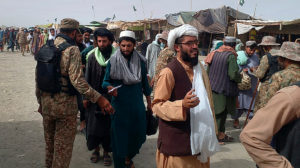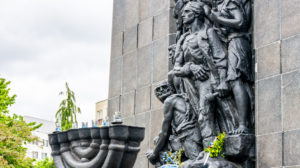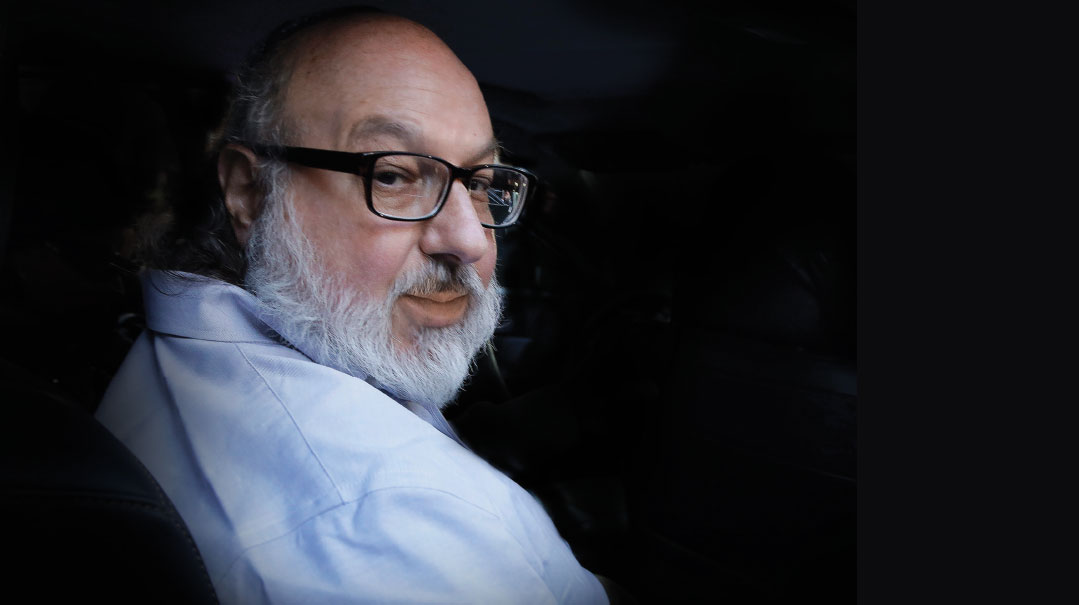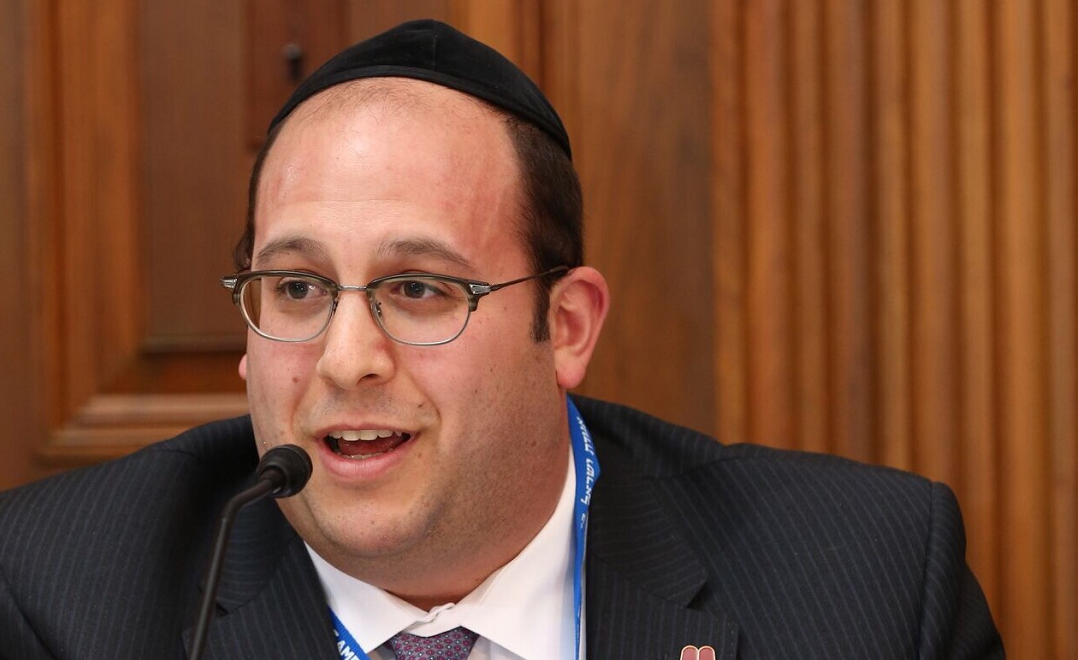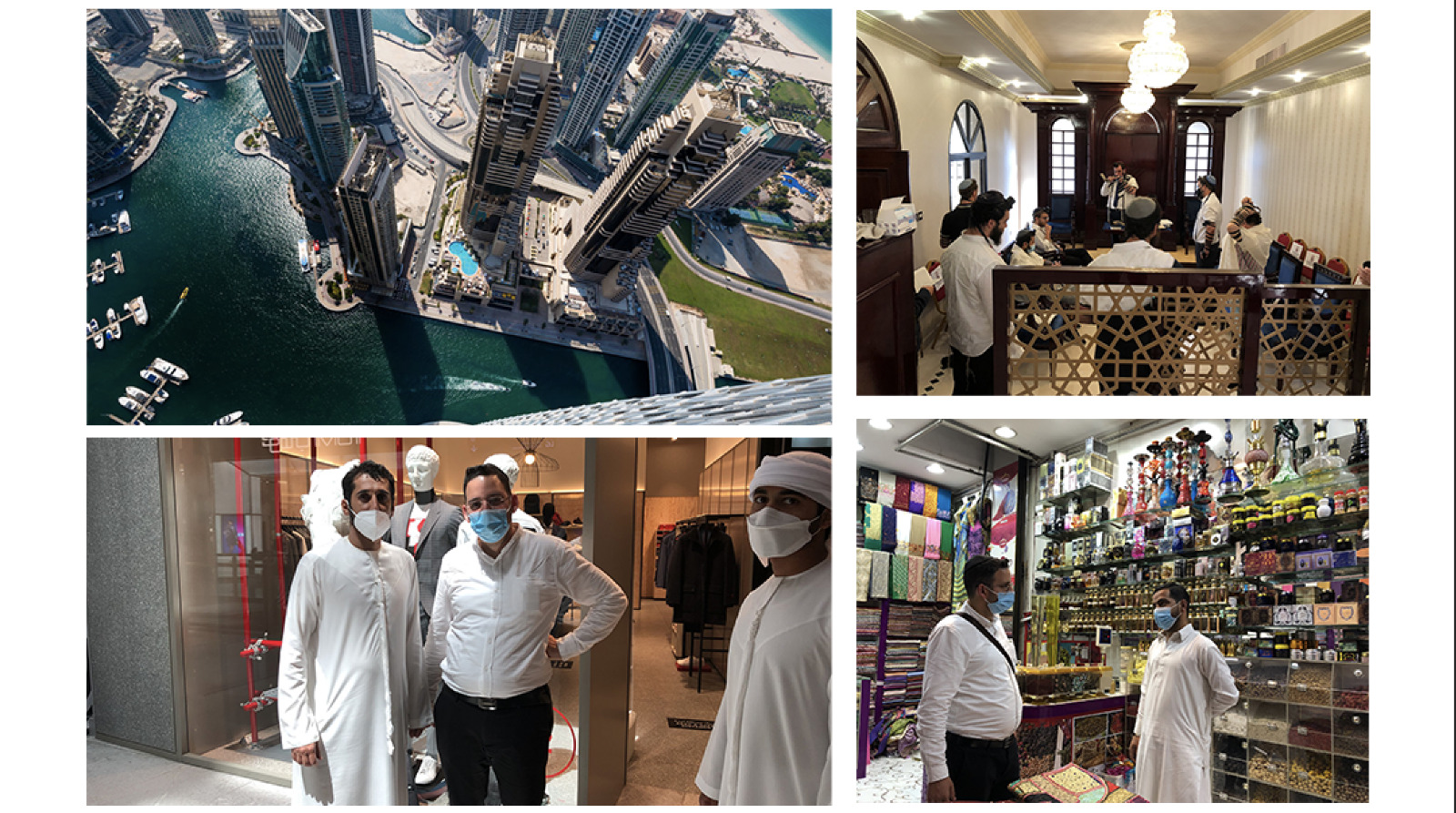Sderot Is Booming

With emunah and against all odds, Israelis are flocking to Sderot, a town that’s thriving despite being in Gaza’s crosshairs
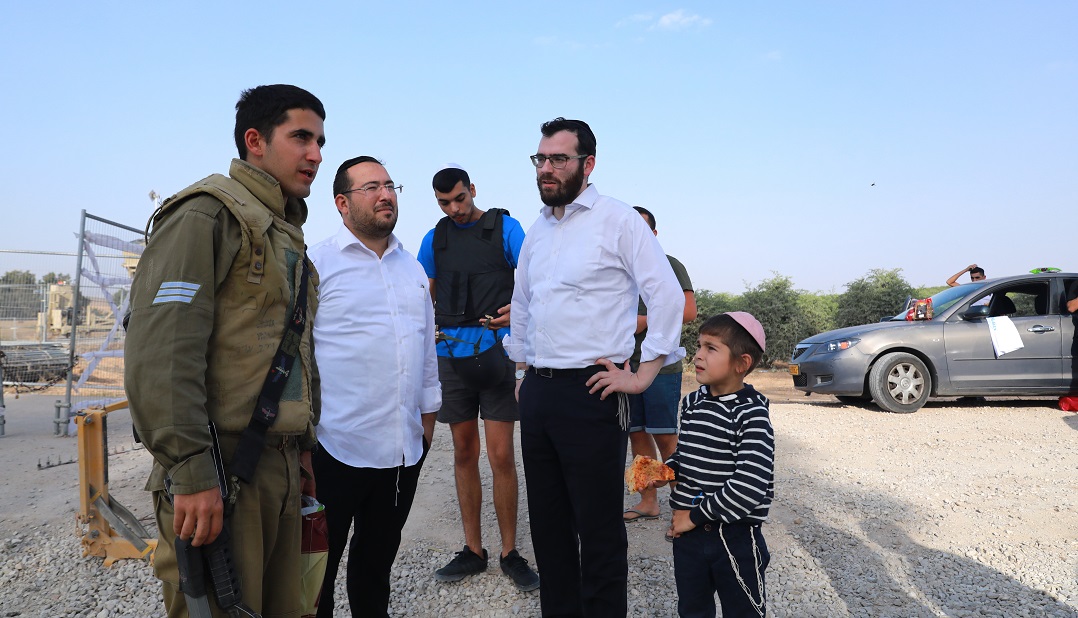
Photos: Eli Cobin, AP/ Images
I
t takes a few minutes to identify what’s really odd about Sderot. The Israeli town on the Gaza border, which just last week was under intense bombardment by Islamic Jihad terrorists, is now in its 18th year in the crosshairs. Hollow booms and white puffs mark Iron Dome interceptions; the few people on the streets flit between bomb shelters; stores are shuttered or half-empty.
It’s something else, though, that’s eerie.
Sderot is a town without children. The fountains spray streams of water skyward in the “Children’s Park,” but the play equipment is empty and the place is locked. In a day spent meeting people of all types, there’s barely a hint that anyone under 16 lives there.
As an icon of the struggle against the Gaza terror statelet, Sderot’s story has been told many times. It’s a tale of businesses suffering, traumatized children, and the impossibility of living a life that requires sprinting to the nearest bomb shelter within 15 seconds.
But there’s another side to Sderot. Where people should be fleeing, young couples are moving in. New neighborhoods are going up and real estate prices are climbing. Teens who know nothing but rockets are proud of sticking it out on the frontlines. The town may be Israel’s fear capital, but hundreds of yeshivah students are turning it into a Torah center as well.
A day spent under fire shows that in this small place there is no room for simple narratives. Call it the Sderot paradox: rockets are booming, but so is life itself.
Every House a Shelter
It takes all of three minutes from my arrival to experience firsthand what a missile attack is like. Greeted by Ari Katz, head of public relations at Sderot’s hesder yeshivah and my guide, I take in a campus bustling with students, the buildings forming a rough square. Then, like the proverbial bolt from the blue, it suddenly happens.
“Tzeva Adom! Tzeva Adom!” crackles a disembodied voice from a powerful speaker. It’s the code for an incoming missile, calculated by radar to be headed for the town. There’s a sound that’s part-hissing, part-aero engine, and I join the scramble up the steps to the bomb-proof main beis medrash building. Within seconds the square is empty as all pile through the heavy doors, and high above the boom signals another Iron Dome interception.
It’s all taken just a few seconds, yet the only signs of the violence averted are the wooly clouds of smoke left drifting across the blue Negev sky.
Some of the teenage yeshivah students laugh nervously as Ari warns not to exit the building immediately — there still may be falling shrapnel. But this is far from the first time that they’ve scrambled. Only the day before, a house behind the yeshivah was nearly struck by a Kassam rocket that made it through the air defenses.
That turned out to be the modest whitewashed home of Libyan-born Amos Chason and his wife. Both in their eighties, the couple had just woken up on Tuesday morning when a missile fired from Gaza slammed into their garden, peppering the house’s exterior wall with shrapnel. “They were crying and very scared,” says Ari. “Boys from the yeshivah, which is where their grandson learns, came and sang with them, which raised their spirits.”
Today Amos is smiling, but he’s clearly still very shaken by his narrow escape. The missile, buried in the back garden, is a reminder that even the Iron Dome’s 90-percent success rate means that to live in Sderot is to live in fear.
The nerves are palpable on the town’s main street, just around the corner. Of the two rows of stores, many of them are shuttered. A few people stand around, but many turn out to be Israeli media, come to report once again on life in this frontier town.
Nachum Pizam, who is the son of Sderot’s Chabad shaliach, has lived in the town all his life. He stops to talk. “The worst thing about this is the surprise,” he says. “You go out to work in the morning and all is peaceful, and you come back at lunch and everyone is running to the shelters because in Gaza they’ve decided to fire a missile and start a new round of fighting. Then it all goes back to normal the next day.”
Glancing up as the booms continue, Nachum says that residents have learned to tell whether the explosion means an Iron Dome intercept or a Kassam rocket falling in an open area. “But it’s not something that you ever get used to,” he says. “After all of these years under fire, I recently developed PTSD, and started to think, When am I going to get hit? Ask anyone in this town — they’d much prefer all-out war for a few months to deal with Gaza once and for all then this never-ending cycle.”
So how are businesses coping under fire? The town’s landmark hummus joint is closed, but there’s a branch of Pizza Shemesh, a mehadrin chain, heroically pretending it’s business as usual. As they punch the dough and spread tomato sauce and cheese, the workers keep one eye on the migunit, the box-like shelter sitting on the sidewalk opposite. “If there’s a siren we run across there,” the manager says, “and we forget the pizza.”
In the meantime, there’s another customer for pizza. Eli Adhanani is a trainee doctor doing his residency in Barzilai Hospital down the road in Ashkelon. He’s been in Sderot for a year, and his young family is coping with living under bombardment. “It all depends on the parents’ attitude,” he says. “My children are basically okay. Maybe after a round of fighting they won’t go to the bathroom on their own for a few days, but then they get back to normal. If they couldn’t cope, I’d be out of here.”
Traumatized children are something that one hears a lot about here in Sderot. And it can’t be easy for families cooped up for days on end in the house. “On days like this,” says Eli, “it’s not easy. Forget school or the park. The children can’t even go out to the garden to play — there’s not enough time for them to get inside.”
So what brings a young, upwardly mobile couple to a place like this? “We wanted somewhere in the south,” Eli Adhanani says, smiling. “Here people are warm, and the town is not too big and not too small. And although I’m not directly connected, the hesder yeshivah community has made this a very good religious place to live.”
Just across the parking lot is one of the commercial mainstays of the town. It’s a supermarket, one of three owned by Yaakov Dahan. Gesturing at the empty store, he says “I’m losing 15,000 shekel a day despite staying open. Officially there’s government compensation, but the bureaucracy means that it can take a year to get anything back. In the meantime, we have to live.”
Like many people in this town, Yaakov, who doubles as a shul gabbai, has his own personal miracle story to tell. “Six years ago, I made a hachnassat sefer Torah. It was a battle day like this, and the police wanted us to do it as quickly as possible. But the yeshivah students joined us and it was very uplifting.
“Then, at the end of the day, I did something unusual,” remembers Yaakov. “The shul has a room where a kollel normally learns, and the local children like to spend time there. It’s normally left open, but for some reason I locked it that day. My wife said to me, ‘Why did you lock it? Go back and open it!’ I headed out again to unlock the room, and on the way I heard a siren. I arrived at the beit knesset and there’d been a direct hit on that room. But because it was locked, the kids were all in the beit knesset itself.”
Miracle stories apart, it would take a tycoon to weather the regular shutdowns that Sderot faces. So Dahan is struggling, as is Shlomi just up the road in a small shawarma joint. While tending his food counter, he grimly admits not receiving orders for two days. “Since this round started, the kibbutzim around Sderot have emptied out and I don’t have business.”
He, too, has had an encounter with a Kassam rocket. His father’s car absorbed a direct hit a few years ago. He survived but spent months recovering in the hospital. Gesturing at the giant screen in the background, where the news anchor is talking about Israel’s political crisis, Shlomi says, “It doesn’t matter who the government is — they won’t help us.”
Shlomi’s financial problems are one thing — but in Sderot, just getting to the end of the road can be daunting. The proximity to Gaza means that something as simple as driving needs planning. According to a lone taxi driver idling by the roadside, “When I drive up the street, I constantly scan which is the nearest shelter in case the sirens go off.”
Are there any solutions to the endless state of siege? The taxi driver thinks so: “Assassinations. Why don’t they kill more of the terrorist leaders?” But Shlomi, the shawarma owner disagrees. “You first have to send the soldiers into Gaza and clean out the terrorists, but then you have to have a peace agreement. There’s 1.5 million of them — we can’t just fight them.”
All That Open Space
If there’s an exposed feeling walking the streets of Sderot, there’s a misleading sense of security around the Iron Dome missile battery on the town’s outskirts. It’s a Sderot landmark, with a steady stream of gawkers and photojournalists arriving in the hope of witnessing a missile streak up in pursuit of a Kassam.
Visible behind a wire fence are three tube launchers angled skyward, with red lights aglow indicating that they’re active, plus a few caravans that presumably house control equipment. Parked off to the side is a green-painted truck with white lettering indicating the manufacturer as “Rafael,” a leading Israeli defense firm. These are the refills for the actual missile interceptor. And that’s it. Close up, Israel’s world-famous Iron Dome system isn’t much to look at.
The soldiers on perimeter duty seem to spend most of their time ensuring that no one takes a picture giving away any details of the sensitive equipment at the site — including its location. But the other part of their job seems to be issuing warnings of the danger of being in open space.
“Do you know what to do if there’s a Tzeva Adom?” asks one.
As if to prove the point, the Gazan terrorists oblige with a missile attack. Together with a carful of Sderot teens, who’ve come to deliver pizza to the soldiers (and get a selfie with the Iron Dome), we jump into a ditch.
There’s something unnerving about being in a missile attack in the open. Trying to shelter behind a concrete bloc, I’m intensely aware of the neighboring battery’s flaws and my own vulnerability. I can’t hear anyone else davening, but — no atheists in a foxhole — I’m sure that they are.
Emerging from the ditch when the attack is over, I introduce myself to Nissim, Yonatan, and Meir, all local kids. As normal 16- and 17-year-olds, they bluster about the whole situation. One shows a video in which he’s hanging out with some friends, when suddenly a Hamas rocket streaks past in the background. “We’ve grown up with this,” he says, “even our dog knows to head for the shelter when the siren goes off.”
But after a couple of minutes of conversation, the teens admit to being scared. “My four-year-old sister is very frightened whenever the siren goes off, and she starts crying. You don’t get used to this.”
And then a revealing argument breaks out. “Your father works for Bibi,” one of the group says, possibly meaning that the family are Likud supporters. “But Bibi does nothing for us; the army does nothing.”
“What do you mean?!” shouts back the other. “Of course the army are always fighting them — it’s the media that don’t report it.” So that’s it: even down here next to Gaza, there’s no escaping Israel’s eternal “Yes Bibi-No Bibi” debate.
Standing here next to the Iron Dome system brings to mind a comment that I heard from Rav Moshe Shapira ztz”l ten years ago. During one of the rounds of fighting in Gaza, with missiles raining down, many of them in “open areas,” he commented, “This is such a small country — where is all of this ‘open space’?”
The answer, it turns out, is that open space is relative. This particular battery is about 700 meters from Sderot’s first row of houses. In between, according to locals, is defined as “open space,” meaning that the system doesn’t attempt to intercept the Kassams.
It’s another reason why Sderot’s residents live in fear. A few hundred meters is too close for comfort when the sirens go off. But it’s also testament to the Divine intervention known as “Kipat Habarzel” that Sderot residents now take for granted.
Room with a View
After a few hours in Sderot, I had a boilerplate news story of a hardscrabble town under fire. It’s a narrative that wouldn’t have been out of place on CNN.
That all changed when I saw the new buildings. Turning right at the traffic circle at Sderot’s entrance, a visitor is greeted by a gleaming new development of villas and high-rises, in a trendy cream and grey color scheme. Many of them are already occupied, and according to Ari Katz, they’re all sold on paper.
And this is only the beginning: in the distance, earth-moving equipment is carving out the latest addition to this frontier town, making space for the many young couples who want to move in.
These diggers tell an incredible story: amid the rockets, something unthinkable is happening. Sderot is in the middle of a long, sustained property boom. According to Housing Ministry statistics, home prices have risen locally 90% since 2008, the time of Israel’s first Gaza war.
It’s not just homes. There are jobs and investment in the town in general. Amdocs, an Israel-based homegrown multinational software firm, has a prominent building near Sderot’s entrance. Other big Israeli companies like Strauss have a large presence here. Ezra Lamarpeh, an Israeli medical nonprofit run by Rabbi Elimelech Firer, has a gleaming building near the town center.
Sderot’s secret is that locals are proud of their resilience, and conscious that they are on Israel’s frontline. “We have a responsibility to the city, not to run,” says trainee doctor Eli Adhanani. It’s a response echoed by others as well, from Nachum Pizam to the teens taking pictures of the Iron Dome.
But perhaps there’s another reason: Sderot is turning into a Torah-learning center, and this is bringing both physical numbers and spiritual resilience in the form of emunah.
Much of that is the work of my host, Rabbi Meir Fendel, who heads Sderot’s hesder yeshivah. A native of West Hempstead, New York, he arrived — via stints in Mercaz Harav and the Mir — to head a kollel in the town 25 years ago. His early investment turned into a thriving network of institutions that makes the hesder yeshivah in Sderot the largest in the country. This particular campus hosts nearly 400 boys, with another 100 currently serving in the army. There is another branch of the yeshivah down the road, plus a kollel and dayanus-training program.
So how is it to teach bochurim in an atmosphere like this, with sirens going off? “The bochurim are understandably nervous, but on a day such as this, the boys are most open,” says Rabbi Fendel. “The tefillah is different, more serious. We talk about the way that Torah magnah umatzlah — Torah protects us. This yeshivah has talmidei chachamim, and what I tell the students is that they’re the city’s guardians, the neturei karta.”
This yeshivah was not meant to be an island of its own but an institution that uplifts the city. “During Elul, a Kassam rocket fell on the other branch of the yeshivah, but no one was hurt. The fact that Torah learning continues here under fire is a kiddush Hashem,” says Rabbi Fendel. “And we want the connection to people living with emunah to spread. That’s why the avreichim live spread out, among the townspeople.”
It’s a connection that continues in other ways. “Rav Chaim Brisker,” explains Rabbi Fendel, “said that a rav can’t just take care of the Torah — he needs to set up tzedakah institutions as well. In the same way, we have our students involved in tzedakah projects. The town appreciates this; they see that along with Torah comes chesed.”
The yeshivah’s connection with the locals is evident in a number of the stories that I hear. Amos Chason, the resident whose house was nearly hit, has a son who teaches in the yeshivah and a grandson who learns there. On the main street is the large Churi bakery. The owner’s son is a student in the yeshivah as well. About six months ago the bakery was hit by a Kassam, which caused a lot of damage. The day before, Rabbi Fendel says, the family married off a daughter in the nearby town of Netivot. The chuppah took place in a shelter, and the dinner had to be rescheduled for a few weeks’ time.
The secret of today’s Sderot, says Rabbi Fendel, is that under the Kassam barrage, the city is turning into a makom Torah. “That protects the city — and we’re not running away.”
It’s a message that stays with me as I pass the TV crews and Sderot’s deserted streets for the drive back to Ramat Beit Shemesh. Only 55 minutes away, it feels like I’ve traveled to a different country. When I arrive, my phone reports ongoing rocket attacks, and I feel a small pang of guilt for leaving a place that has lived with sirens for nearly two decades.
But if I’m not forced to cope with the reality of Sderot, I take with me a reminder of the residents’ emunah. Because against all the odds, life on Israel’s front lines is booming.
Guardians of the South
My to-do list in Sderot included an item of personal significance: to search for Rav Yissochor Meyer’s yeshivah. The legendary rosh yeshivah of Yeshivat Hanegev in Netivot, who passed away in 2010, was the father of Torah in Israel’s south. He dedicated his life to building yeshivos, girls’ seminaries, and religious neighborhoods across the Negev, which hosts many of Israel’s poorest cities.
Sometime in the mid-2000s, my wife’s grandfather Mr. David Rothschild of Zurich, who was a close-friend of Rav Yisochor Meyer, came to visit him in Netivot. Aware that Sderot was a dangerous place, he took a roundabout route to avoid the town. But when he arrived, Rav Meyer said to him, “Reb Dovid, come with me, I have something to show you.” Together they drove to… Sderot! Rav Yissochor Meyer said that a town under fire needed the zechus of Torah learning to protect it, so he’d founded Heichal Eliyahu, which continues to operate to this day. At first, no one dreamed of sending their children to learn in such a place, but eventually the yeshivah established itself. Many times, rockets fell around the yeshivah buildings, but it was never hit.
Making contact with the current rosh yeshivah, Rav Yisroel Meir Shalom, he confirmed that bochurim had continued to learn through the bombardment.
Rav Yissochor Meyer’s legacy continued in Netivot last week. His yeshivah, now named Yeshiva Schar Sachir, has 250 bochurim on the main campus, and another three affiliated institutions. In last week’s attacks, hundreds of boys from all backgrounds, and different yeshivos, gathered in the same bomb shelters to continue Rav Yissochor Meyer’s mission of guarding Israel’s south.
(Originally featured in Mishpacha, Issue 786)
Oops! We could not locate your form.




